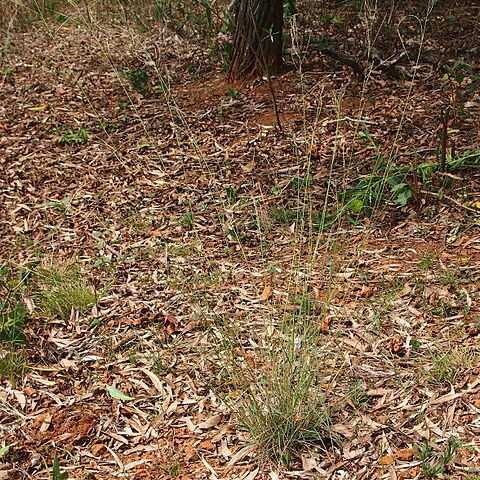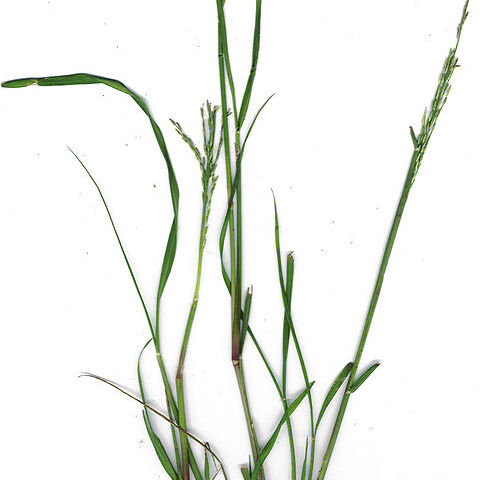Annuals or perennials. Leaf blades linear; ligule membranous, sometimes with a ciliate fringe. Inflorescence open, composed of several to many slender racemes of usually imbricate spikelets scattered along a central axis. Spikelets laterally compressed or subterete, florets 1 to several, rachilla disarticulating above glumes and between florets; glumes usually shorter than lemmas, unequal, membranous, 1-veined; lemmas membranous, 3-veined, generally hairy along the veins, keeled or rounded, obtuse or 2-dentate, sometimes mucronate to short-awned; palea equal to or slightly shorter than lemma. Stamens (1–)3. Caryopsis laterally or dorsally compressed. x = 10.
Tufted or rhizomatous annuals or perennials. Leaf-blades linear or lanceolate, usually flat; ligule short, membranous. Inflorescence open, composed of several to numerous slender secund racemes scattered along a central axis. Spikelets 1-several-flowered, laterally compressed, usually overlapping, biseriate, disarticulating between the florets; glumes 1-nerved, membranous, keeled, usually shorter than the lemmas, subequal to unequal, persistent; lemmas 3-nerved, membranous, keeled, minutely hairy along the nerves and sometimes also on the back, acute or obtuse, entire or emarginate, awnless (in the African species). Caryopses various.
Spikelets 2–12-fld, articulated above the glumes; glumes 1-veined; lemmas 3-veined, rounded on the back, obtuse or truncate to acute or shortly bifid at the tip, the veins sometimes excurrent into a short central awn or minute lateral teeth; palea broad, nearly as long as the lemma; annual (all ours) or perennial, usually weedy grasses, often branched from the base, with scarious ligule and numerous long spike-like racemes disposed along a central axis to form a large panicle. (Diplachne) 40, warm reg.
Spikelets few-to several-flowered, the upper floret reduced to a small awnless rudiment, sessile or short-pedicellate, crowded or somewhat distant on one side of the slender rachis; glumes 1-nerved, the second usually longer and broader than the first; lemmas 3-nerved, acute, minutely bifid, awnless or rarely short-awned, pubescent or pilose on the margins and sometimes on the internerves. Annual or perennial grasses with flat blades and numerous slender spikes scattered along the common axis.
Spikelets 1–several-flowered, laterally compressed or subterete, biseriate, subsessile or shortly pedicelled, disarticulating above the glumes and between the florets; glumes persistent, membranous, 1-nerved, unequal or subequal, shorter than the spikelet; lemmas 3-nerved, keeled or dorsally rounded, membranous, glabrous or appressed-pilose on the nerves, obtuse or 2-toothed at the apex, rarely acute or acuminate, sometimes mucronate, rarely with a short awn.
Inflorescence of several to many slender racemes on an elongated central axis, rarely subdigitate.
Caryopsis laterally or dorsally compressed.


